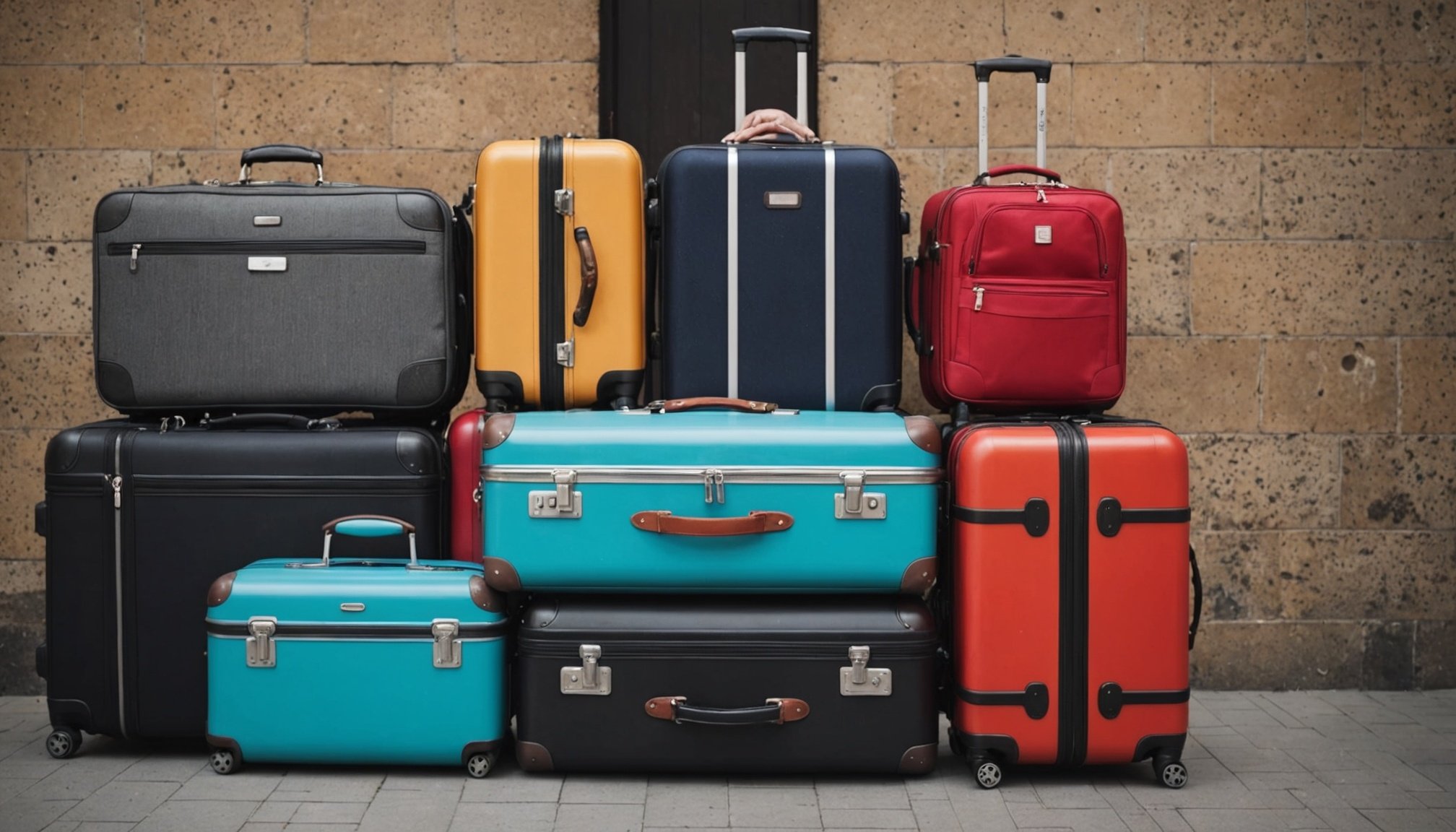Packing light and smart transforms any trip from stressful to smooth. Choosing the right fabrics, rolling clothes to save space, and organizing with packing cubes all help you avoid wrinkles and chaos. These practical strategies ensure you meet airline rules effortlessly while keeping essentials accessible. Preparing your luggage thoughtfully not only protects your belongings but also makes every journey more enjoyable.
Efficient travel packing essentials for stress-free journeys
Strategic packing begins with selecting durable travel bags that suit your trip—lightweight, wheeled suitcases excel for city breaks, and rugged backpacks or duffels are versatile for adventurous routes. Immediately after this choice, Discover how smart suitcase organization saves both space and stress: group outfits together, roll clothes to reduce wrinkles, and choose fabrics like knits that emerge from transit looking fresh.
Also read : Blending Timeless British Vintage Treasures with Contemporary Fashion: Your Ultimate Style Guide
Minimize the risk of overpacking or excess baggage by making a packing list and checking airline carry-on and checked baggage restrictions for each segment of your trip. Airlines may enforce different size and weight limits, so use a luggage scale before setting out. For short trips and business travel, focus on packing light with a capsule wardrobe—three neutral trousers, four mixable tops, and two to three pairs of shoes suffice for one week.
Integrate packing cubes and clear toiletry bags to organize not just clothing, but also chargers, documents, and medications. Keep essentials accessible in your carry-on, especially for items you’ll need on arrival. Stash a foldable tote for souvenirs or overflow. These strategies reduce repacking headaches, support fast airport transitions, and support stress-free travel in 2025 and beyond.
Also read : The Ultimate Guide to the Best Clothing Fabrics for Sensitive Skin in the UK: Enjoy All-Year Comfort!
Expert luggage selection and packing techniques
Matching luggage type to travel style and duration
Start by assessing whether business travel packing strategies or leisure trips are your focus. Selecting durable travel bags is paramount for both, but requirements change with international packing guidelines or quick getaways. For short trips, choosing carry-on compatible items saves time and sidesteps checked baggage complications. Size your bag based on actual travel duration and remember air travel luggage restrictions—carry-on limits vary by airline. Specialists recommend referencing guidelines for international baggage allowance before packing.
Materials and features for reliable, secure travel bags
Focus on materials that withstand wear and tear for international travel and repeated handling. Luggage durability testing tips emphasize that hard-sided options shield delicate contents, and soft-sided bags can expand to fit souvenirs or multi-purpose travel accessories from your checklist for business trip packing. Prioritize best travel luggage brands offering TSA-approved lock usage, secure zippers, RFID-blocking compartments, and robust telescoping handles. Securing luggage for flights means reinforcing all closures, applying personalized tags, and double-checking airline baggage policies for peace of mind.
Packing light with capsule wardrobes and multi-purpose items
Efficient carry-on packing tips hinge on minimalist packing advice and smart suitcase organization. For any trip, packing for weather variations requires multi-purpose travel accessories and a streamlined capsule wardrobe: three neutral bottoms, four interchangeable tops, two to three footwear pairs, and enough undergarments for seven days. Compressing clothing to save space, using space-saving packing cubes, and rolling versus folding clothes can minimize bulk. These strategies reduce the risk of lost luggage, avoid excess baggage fees, and simplify fast airport luggage handling.
Maximizing packing space and suitcase organization
Rolling vs. folding clothes remains one of the most effective strategies for efficient use of luggage space. According to smart suitcase organization guidelines, rolling clothes tightly not only saves room but also helps minimize creases. This method allows for compressing clothing to save space and helps prevent those stubborn folds that occur when items are stacked flat. For delicate or formal wear, combining rolling and gentle folding, then sandwiching items with dry-cleaning bags, further reduces wrinkling.
Efficient use of packing cubes and bags transforms travel packing. Space-saving packing cubes usage segments your belongings, making it easier to retrieve items and support quick access packing techniques while on the go. Assign laundry bags for dirty clothes and clear, sealable bags for toiletries following the strict liquid guidelines for air travel. Packing cubes are especially beneficial for organizing travel documents within luggage, and thin cubes excel at fitting in oddly shaped or tight suitcase corners.
Always address dead space by stuffing socks, chargers, or underwear inside shoes, and fill every available gap. To promote balance, place heavy items such as shoes close to the wheels, stabilizing your suitcase for smooth transport. This detailed approach prevents items from shifting and protects fragile belongings, upholding smart suitcase organization at every step.
Essential compliance and protection: security, regulations, and valuables
Decoding airline weight limits, size restrictions, and baggage policies
Precision: Always verify air travel luggage restrictions, as airlines enforce unique weight limits and dimensions for hand and checked baggage. For international flights, guidelines for international baggage allowance can differ not only by carrier but also by ticket type—economy, premium, or business. To avoid complications and excess fees, weigh your bag with a digital scale before departing. Allow a small buffer under the limit in case airport scales vary. Overpacked suitcases may lead to last-minute repacking or charges.
Packing liquids and electronics safely for smooth security checks
Recall: When preparing carry-on bags, manage your liquids and gels by following the TSA’s 3-1-1 rule: containers must not exceed 3.4 oz (100 ml), placed in a clear, quart-size plastic bag. This streamlines security procedures for carry-on bags. Grouping electronics together and keeping chargers accessible eases secondary checks. Using TSA-approved lock usage on any checked luggage maintains compliance while deterring tampering.
Techniques to safeguard valuables and avoid lost or delayed luggage
Safeguard valuables by using discreet packing—store jewelry or cash inside understated containers like empty toiletry bottles. Secure zippers with TSA-approved lock usage and personalize luggage with bright tags for fast identification. For greater travel security and luggage locks effectiveness, keep vital items and a change of clothes in your carry-on, protecting against lost or delayed checked baggage.
Insider travel organization hacks for frequent flyers and families
Creating and using customized packing lists and checklists
Using packing guides by travel experts minimizes the risk of forgetting essentials. Start every trip—business, solo, or family—by drafting a tailored checklist. These checklists should highlight travel packing mistakes to avoid, such as overpacking or failing to check air travel luggage restrictions. When planning a week-long holiday, ensure your list reflects both your itinerary and the airline’s allowed carry-on dimensions. For families, collaborative checklists help manage everyone’s needs and support packing for family travel efficiently.
Storing travel documents and medications for easy access
Efficient organizing travel documents within luggage means utilizing dedicated pockets or wallets placed at the top of your suitcase or inside your carry-on. Take extra care with passports, boarding passes, insurance, and medication. Place your medication in hand luggage, as packing experts suggest, to secure essential access during all transit points. Pack liquid medications according to travel-friendly toiletry packing rules to clear security procedures for carry-on bags without delays.
Adapting packing approaches for business, solo, and family trips
Each trip type has unique requirements. Business travelers may prioritize clothing planning for business travel, focusing on minimal and wrinkle-resistant apparel. Solo adventurers benefit from quick access packing techniques and minimizing checked baggage issues. When packing for family travel, segment each member’s clothing and essentials into individual packing cubes, facilitating both organization and efficient suitcase repacking. These strategies reduce travel stress with organized luggage, whatever your travel occasion.




